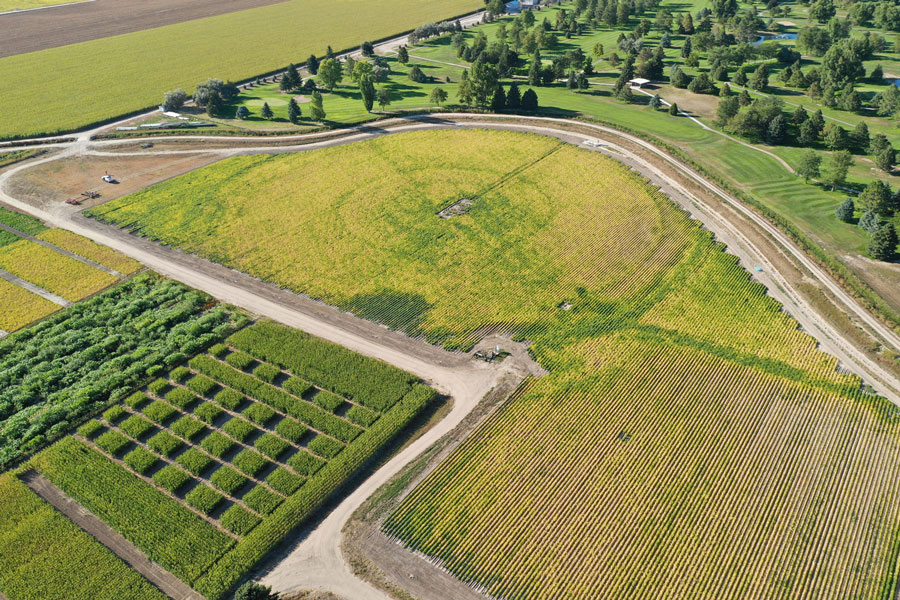
[this article originally appeared on the Panhandle Research and Extension Center website]
Panhandle Perspectives - October 17, 2018
Subsurface drip irrigation tested at Panhandle Center
By Xin Qiao, Irrigation and Water Management Specialist
Panhandle R&E Center, Scottsbluff
Subsurface drip irrigation (SDI) systems apply water directly to the crop root zone through buried plastic tapes with embedded emitters.
The major benefit of SDI systems is their water-use efficiency, compared to sprinkler irrigation or furrow irrigation systems. Because drip tapes are buried at about 12 inches below ground surface (this can vary depending on soil type and crop) and the soil surface stays dry, water loss due to evaporation and runoff are minimized.
Another big advantage of SDI is its flexibility to irrigate irregular-shaped fields. Other potential benefits include improved fertilizer and pesticide management, better weed control, and better disease control. An SDI system also allows farmers to perform more field operations, even during irrigation events.
While the benefits are significant, there are challenges as well, just like every other system, including high initial investment; adapting to new management practice; germination (especially in sandy soil); and damage from rodents.
An SDI system can only be more efficient than any other irrigation system if it is designed, installed, and managed correctly.
To better help farmers in the Nebraska Panhandle to understand crop production using SDI systems, a state-of-the-art SDI system was set up this summer at the Panhandle Research and Extension Center, with support from 21st Century Water Technologies, Eco-Drip, and Agriculture Research Division (ARD) of University of Nebraska-Lincoln.
The system was installed in a field which was originally two fields, one formerly irrigated by a two-span pivot and the other an adjacent rectangular field formerly irrigated with a side roll. This test field contains 24 management zones. Rows are spaced at 30 inches apart, and drip tapes have been buried under every row at about 12 inches deep.
In 2018, we planted great northern beans in this field. It was interesting that the old system footprint and boundaries, such as pivot tracks are still visible in the accompanying photo, captured during the growing season from a drone.
With this system, we would like to answer some key and basic questions, including, but not limited to: Optimum irrigation scheduling strategy; Optimum fertigation strategy; Water-use efficiency and nitrogen use efficiency under different scenarios; Performance characteristics such as water distribution patterns under different irrigation scenarios; Tillage effect.
In the meantime, operation, maintenance, as well as system issues, will be documented in detail for future references. We also encourage farmers to contact us if you have questions or any research you would like us to do about SDI.